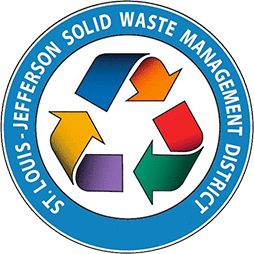Welcome to part two of The History of Recycling! “The History of Recycling: Part One” explained what recycling is and how it was prioritized and utilized from 1500 BC until plastic was invented in 1907. Now, Part Two will explore the changes in recycling as plastic increases in popularity and the environmental movement kicks off in the 1970’s.
Plastics Shifts Priorities
The first plastic bottles became available to consumers in 1947. Plastics were still very expensive until the discovery of polyethylene in the 1950’s. This new type of plastic allowed manufacturers to make colorful and lightweight designs, permitting brands like Tupperware and Thermos to design reusable products for food storage. This led to the development of garbage bags and plastic baggies (Pepsico 4/14/2021). Plastic bags and wrap cannot be recycled in your Blue Bin because we only accept plastic bottles and containers. When plastic bags or film enter the recycling stream they contaminate other good recyclables and jam the sorting gears at the Materials Recovery Facility (MRF). Fortunately, due to many advancements in recycling technology, you can recycle these plastic bags and film at your local grocery, retail store or at a dropoff location near you!
As trade expanded during the Industrial Revolution, it was important that the products endure the journey to their new destination, however far that might be. Therefore, quality packaging and shelf life became a top priority for manufacturers. Packaging and shelf life became increasingly important around the same time that it became easier for manufacturers to incorporate colorful and lightweight plastic packaging. Therefore, producers took the opportunity to brand their products through designs on their packaging. This developed into the branded metal vegetable cans, colorful boxed cereals, clamshells, and meat wrapped in plastic film that we are all familiar with today.

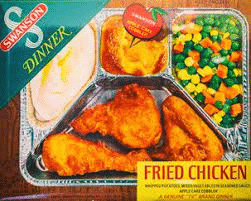
With this production shift towards branded packaging and the widespread use of single-use-disposable plastics, consumers expected to buy products that could easily be thrown away. By the 1970’s, convenience became the priority when designing products and packaging. This ushered in the single-use-disposable era of packaging. Advertisements even encouraged consumers to throw things away rather than considering the benefits of recycling them.
The 1970’s National Environmental Movement Shapes Recycling as We Know it
After World War II, landfilling was the most popular form of waste disposal (Pepsico. “Discover the History of Recycling: America Transforms Their Trash”. 5/19/2021). Unfortunately, given the commonality of plastics and disposable packaging, landfills were overflowing and running out of space rapidly. It was clear that the U.S. had a major trash problem and people began to see and understand the environmental dangers of landfills. This is where recycling comes in as it can remove materials from the waste stream and conserve landfill space. The very first Earth Day was celebrated in 1970 across the entire country. The national event shed light on air, water and land pollution as well as the importance of changing our ways to preserve our life on Earth. You can view the different ways people took action in this 1970’s news clip!
Around the same time as the first Earth Day was formulating, the environmental justice movement took off. The environmental justice movement addresses the fact that people who live, work and play in America’s most polluted environments are commonly people of color and the poor. Poor and minority communities began taking action to prevent toxic landfills and industrial plants from entering their neighborhoods. This movement has grown significantly since its conception and continues to make progress. Renee Skelton and Vernice Miller from the Natural Resources Defense Council offer additional information on the environmental justice movement in their article “The Environmental Justice Movement”.
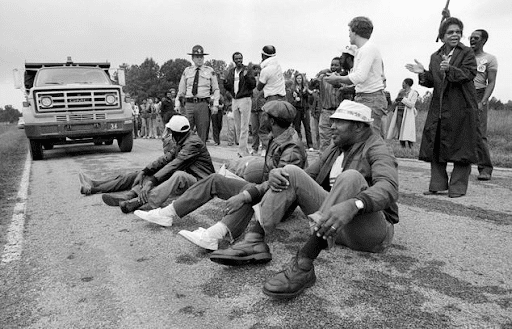
Ricky Stilley
One of the responses to these environmental movements was to decrease the amount of landfill waste by increasing recycling participation. Just four years after the first Earth Day celebration, the first recycling mill was built in Conshohocken, Pennsylvania. Also in 1974, the first recycling bin, named “The Tree Saver”, was designed to collect paper and hit curbsides in Missouri (Pepsico. 5/19/22). This was a great start but it was still difficult for most people to recycle because they would have to sort and transport the materials themselves.
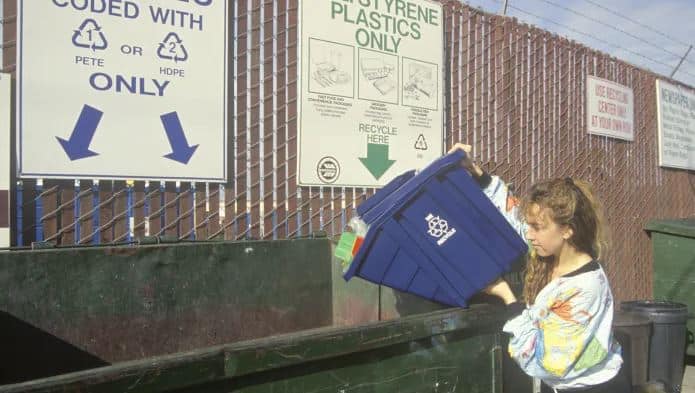
Also inspired by the 1970’s environmental movement, Rose Rowan introduced the idea of “recycling trailers” to improve curbside recycling collection. The trailers hitched onto the backs of garbage trucks to facilitate the recycling of newspapers alongside regular domestic waste collection.
As it became easier to obtain new materials and as plastic became more common, products and packaging were based on convenience. This led to massive amounts of landfill waste with detrimental environmental impacts, which disproportionately impacted poor communities and communities of color. As these impacts became more present and undeniable, the environmental movement kicked off and recycling began to resemble how we see it today.
Modern Recycling
Modern technology has made recycling collection more efficient than ever. Cameras in the cab, back, and sides of the truck allow drivers to check blind spots and maneuver safely. Computers or tablets help workers track progress, send and receive messages and take photos when needed. Additionally, mechanical arms pick up bins and dump recyclables in the truck. By automating this step, workers no longer have to get on and off the truck, making their job safer and more efficient (Pepsico. 5/19/22).
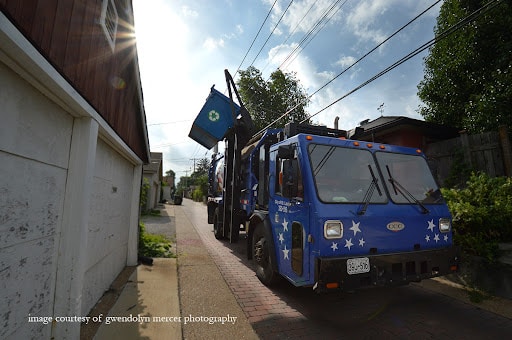
As recycling gained in popularity and availability, the big blue bin made quite an entrance in America. The blue color and well recognized recycling mobius ♻ inspired people to hop on the recycling bandwagon. It’s important to recognize that different cities across the country developed their own recycling bins, designs and colors. Even today, each state, city or town can have different recycling guidelines.
The time, effort and space required to sort materials made some people reluctant to recycle. Moving to single-stream recycling and allowing people to put everything into one bin simplified the process for both households and collection workers. Be sure to know which bin is for recycling in your town and what is accepted. Here in St. Louis city, our recycling bins are blue and marked “Recyclables Only.” Learn what can be recycled in your Blue Bin!
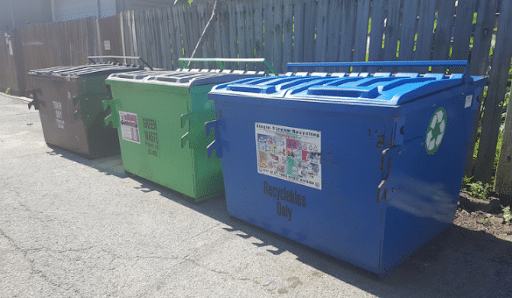
When the U.S. first started sorting recyclable materials, the process was mostly manual and involved workers watching items move around on conveyor belts at the MRF. Technology has improved throughout the history of recycling, though, and innovative technologies like optical sorters, lasers and magnets have modernized the sorting process. This technology was created to recognize and sort products by their original shape. This means crumpled cans, bottles or cartons can be incorrectly sorted because the technology could confuse it for flat paper or cardboard. You can read more about the Materials Recovery Facility St. Louis uses in our blog post “Virtual Recycling Facility Tour” and our other blog post “Where Does My Recycling Go?”.
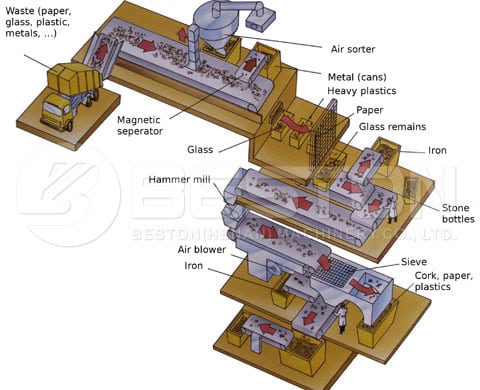
For a large part of American recycling history, we’ve exported our recycled materials. Today, we handle more and more of this process domestically. In fact, 97% of St. Louis’ recyclables are sold domestically with only 3% (mostly paper) sold to Mexico.
In 1960, just over 6% of municipal solid waste was recycled nationally. Since then, national recycling rates have increased to over 35% in 2017! That’s helped decrease the amount of waste going to landfills from 94% in 1960 to 52% of the amount generated in 2017.
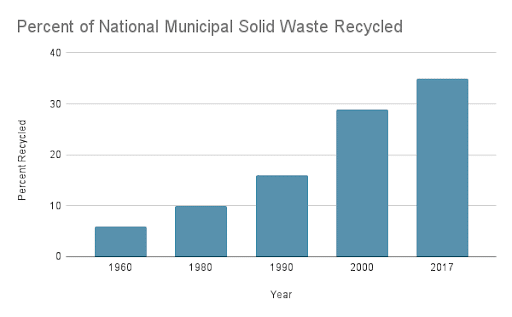
The City of St. Louis began curbside and alley collection of recyclable materials in 2011. In that first year, just 6.2% of residential waste was recycled. Today, St. Louis city recycles 10.7% of residential waste.
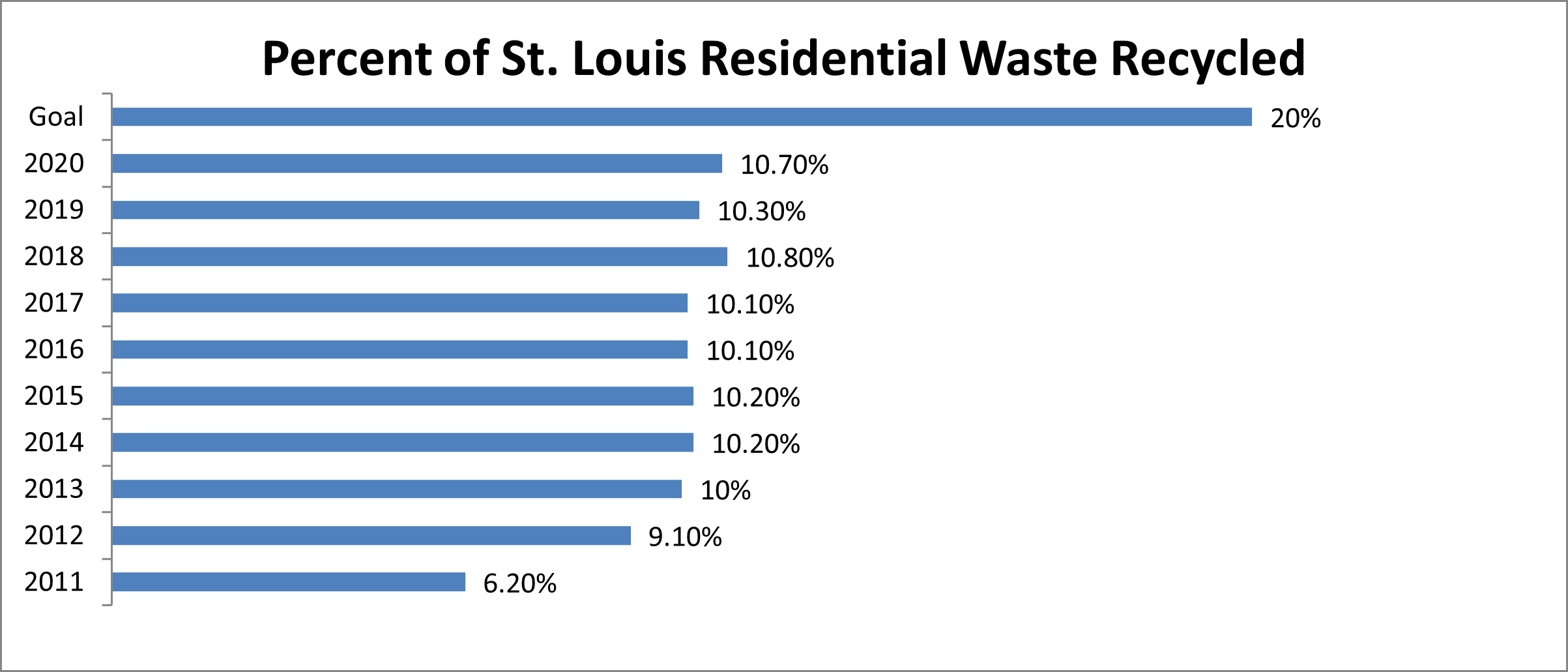
Meanwhile, as of 2017, 40% of St. Louis residential waste was recyclable. This means there is more work to do to expand recycling participation and collection. The ease of single stream recycling and our consistent messaging has helped us get this far. Stick with the six, bring plastic bags and wraps back to the grocery store, share recycling information and St. Louis will be cleaner and healthier than ever!
Our ancient ancestors saw the value in recycling and the plastics movement showed us the dangers of landfills. The 1970’s environmental movement allowed recycling to make a comeback! Recycling is an excellent and proven alternative to landfills and for acquiring resources. Recycling provides jobs, reduces greenhouse gas emissions that contribute to climate change, reduces pollution, and helps keep our environment and communities clean and healthy. Help keep St. Louis clean and take the pledge to recycle!
Sources
History: When Did Americans Start Recycling?
Missouri Department of Natural Resources: Statewide Waste Composition Study, 2016-2017
Osmosys: The past, present and future of the plastic bottle
Pepsico: Discover the History of Recycling: America Transforms Their Trash
Pepsico: Discover the History of Recycling: How Did We Get Here?
Plastic Expert: Recycling Through The Ages: 1970s
Plastic Packing Technologies, LLC: The Evolution of Food Packaging Design Through the Years
Natural Resources Defense Council: The Environmental Justice Movement
University of Colorado Boulder: The Hidden Damage of Landfills







